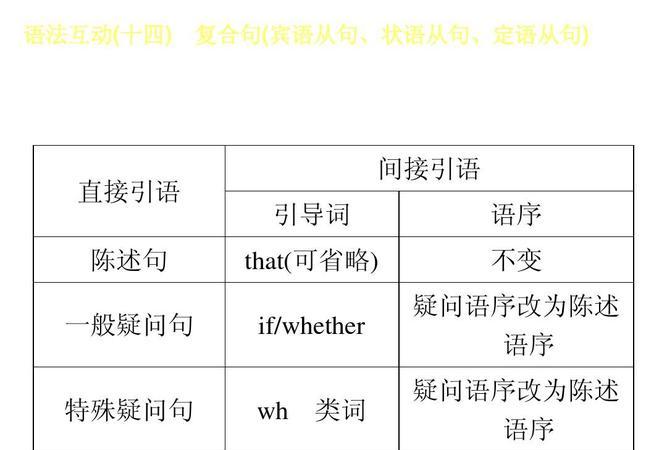在英语学习中,目的状语和结果状语的区别主要在于它们的作用和用法。目的状语表示目的或意图,常由“in order to”、“so as to”等介词短语构成,而结果状语表示结果或后果,常由“so”、“such”等词构成。区分这两者的方法是看前面是否有表示目的或结果的词语。

目的状语
目的状语是表示目的或意图的状语,通常由“in order to”、“so as to”、“for the purpose of”、“with the aim of”等介词短语构成。例如:
- I study hard every day in order to pass the exam.
- She saved money so as to buy a new car.
- We are holding this meeting for the purpose of discussing the project.
- He went to the library with the aim of finding some useful books.
可以看出,目的状语的作用是为了表达一个明确的目的或意图,说明一个动作或行为的目的所在。
结果状语
结果状语是表示结果或后果的状语,通常由“so”、“such”、“enough”等词构成。例如:
- He studied hard, so he passed the exam.
- The weather was such that we had to cancel the picnic.
- The book was interesting enough to keep me up all night.
可以看出,结果状语的作用是为了表达一个结果或后果,说明一个动作或行为所导致的结果。
区分方法
区分目的状语和结果状语的方法主要是看前面是否有“目的性”或“结果性”的词语。如果前面有表示目的或意图的词语,那么后面的状语就是目的状语;如果前面有表示结果或后果的词语,那么后面的状语就是结果状语。
例如,在上述的例子中,第一句话中的“in order to”表示目的,后面的“pass the exam”就是目的状语;而第二句话中的“so”表示结果,后面的“he passed the exam”就是结果状语。

